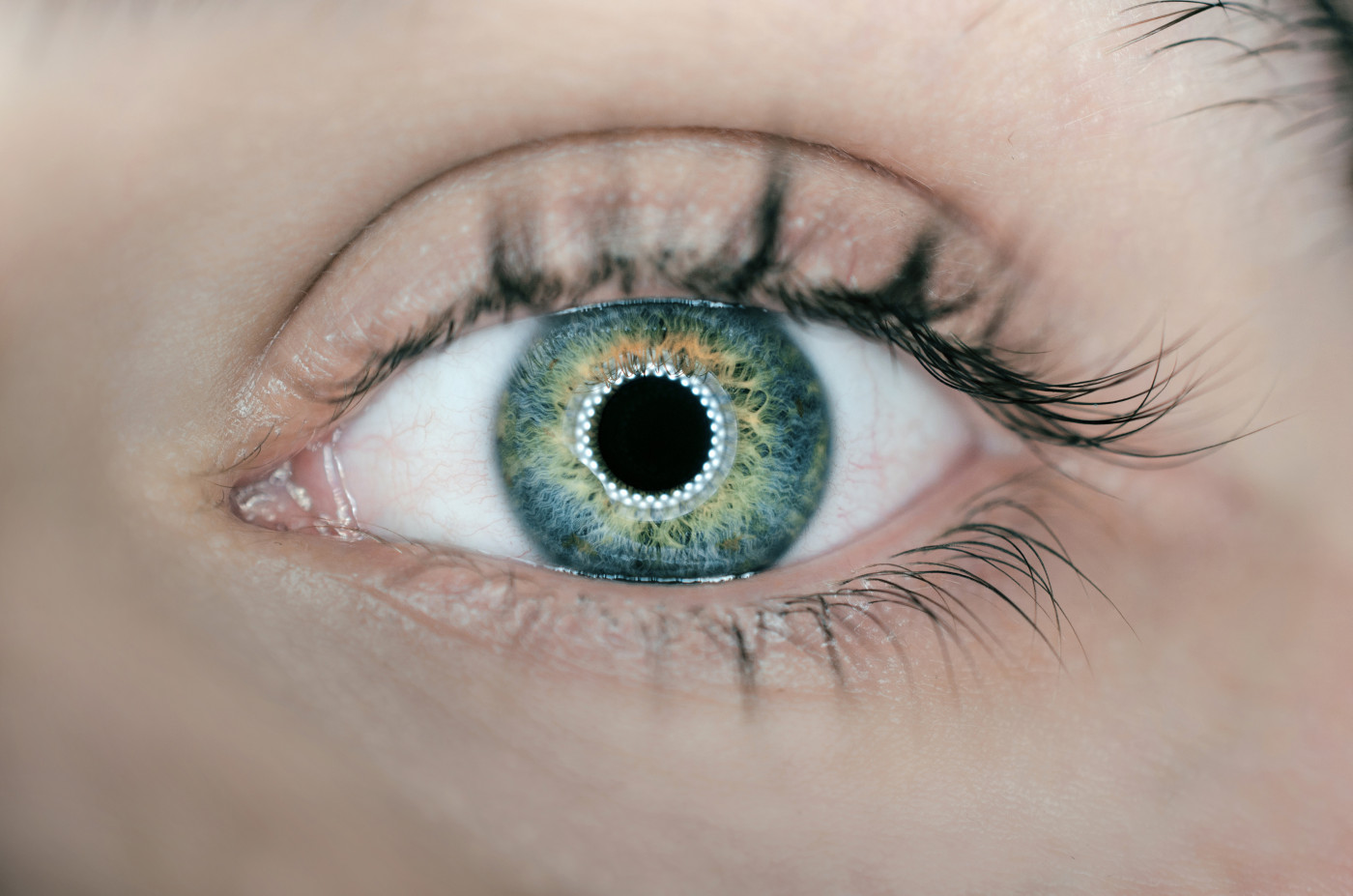Smart Contact Lens Shows Ability to Measure Cortisol Levels

A newly developed smart contact lens might be used to measure levels of the hormone cortisol in a person’s tears, which could be helpful in disorders such as Cushing’s disease.
The new device was described in Science Advances, in the study, “Smart, soft contact lens for wireless immunosensing of cortisol.”
Cortisol is a steroid hormone that is important for regulating numerous processes throughout the body. Dysregulated cortisol levels can cause problems — Cushing’s disease is caused by cortisol levels being too high, while Addison’s disease is characterized by cortisol levels being too low.
Because of its importance to human health, it is often necessary for doctors to measure cortisol levels. Many techniques exist to check levels in various fluids — blood, urine, tears, etc. However, biologically active cortisol isn’t stable at room temperature, so taking measures on fluids that are collected and stored for any amount of time risks inaccuracies.
An alternative strategy would be to have a wearable device that could measure bodily cortisol levels in real time. While some such strategies have been tried — for example, one previously developed wearable sensor measures cortisol levels in sweat — they often involve bulky equipment, which limits their use.
“Therefore, portable and smart sensors that can monitor the accurate concentration of cortisol in real time are highly desirable for use in mobile health care,” the researchers wrote.
Since it is well-established that cortisol levels can be measured in tears, contact lenses could conceivably be used to actively monitor cortisol levels. A team of researchers developed contact lenses for this purpose.
“Here, we present an extraordinary approach for the formation of a smart, soft contact lens that enables remote, real-time monitoring of the cortisol level in the wearer’s tears using mobile phones,” the researchers wrote.
“This smart, soft contact lens is composed of a cortisol sensor, a wireless antenna, capacitors, resistors, and integrated circuit chips that use stretchable interconnects without obstructing the wearer’s view.”
Basically, the lens works by using antibodies to detect cortisol. When an antibody binds to cortisol, it changes the resistance of circuits within the lens.
Then, a smartphone is used to apply a magnetic field to a tiny antenna in the lens. This induces an electrical circuit, allowing a specialized sensor to measure the resistance of the lens, and transmit these data to the smartphone. Using the measured resistance and the known characteristics of the lens, the phone can then calculate cortisol concentrations.
The lenses themselves were designed to optimize comfort while wearing, and to ensure that the wearer’s vision wouldn’t be obstructed.
Using a battery of tests in dishes, the researchers demonstrated that their contact lens was able to accurately measure cortisol concentrations as low as 10 picograms per milliliter (pg/ml, 0.01 ng/ml). Typically, cortisol levels in tears range from 1 to 40 nanograms per milliliter (ng/ml).
“The sensor was highly responsive to the typical range of cortisol concentrations in the tears,” the researchers wrote.
The team then conducted proof-of-concept experiments in rabbits, and one human volunteer, to show that the lens could feasibly be worn and used to collect data. Additional experiments indicated that the lens itself would not be toxic to human cells.
“The pilot trial with a person and the in vivo tests with live rabbits verified the good biocompatibility of this smart lens as a noninvasive mobile health care solution that can provide clinical information and the potential capability for machine learning in diagnosing disease,” the researchers wrote.
“Clinical analyses on the correlation of the cortisol level in the tears with the serum case, as well as with other biomarkers at various physiological conditions, appear to be a promising direction for future work.”






